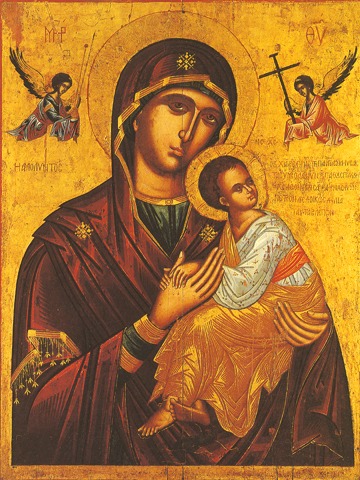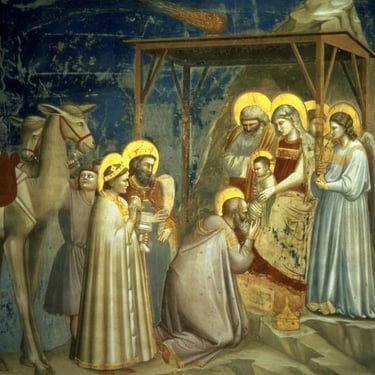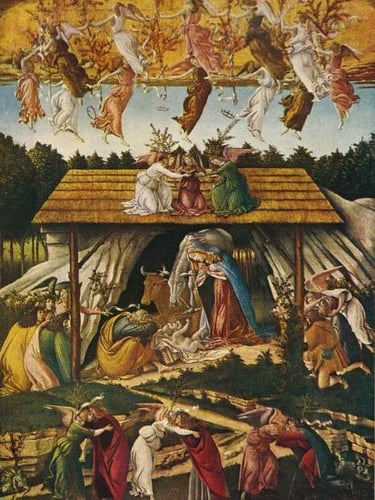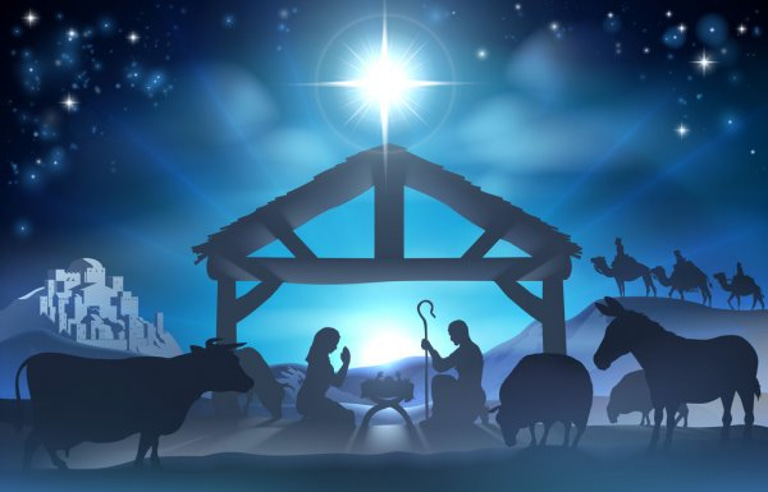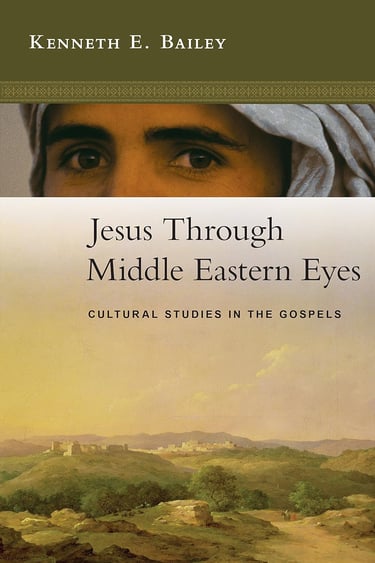Celebrating Diversity: Authentic Representation in the Nativity
The Nativity is about love and hope, but art often misses the mark. Discover how we can promote authenticity in its portrayals. Join the movement!
Grace Callahan
11/22/20245 min read
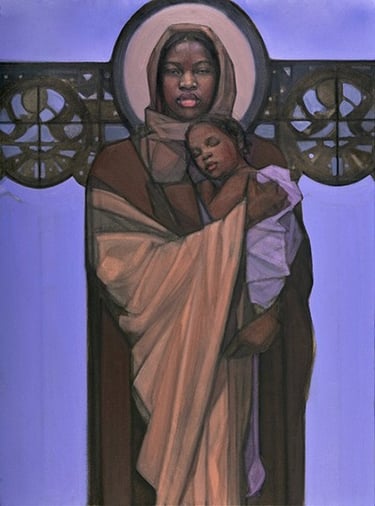

The History and Evolution of Nativity Depictions
The visual and artistic portrayal of the Nativity story has evolved dramatically over two millennia. This section explores how these depictions have mirrored the cultural and political contexts of their time.
1. Early Christianity (1st–4th Century)
Symbolic Representation:
Early Christians lived under Roman persecution, necessitating covert religious expression. Instead of direct biblical depictions, symbols like the Chi-Rho (a Christogram) and the Good Shepherd were employed to communicate Christian ideals.
Nativity themes appeared subtly in funerary art, such as frescoes in the Catacombs of Rome, blending pagan and Christian imagery.
Spiritual Emphasis Over Detail:
These early works prioritized spiritual symbolism over historical or cultural accuracy, omitting physical depictions of Jesus’s birth.
2. Byzantine Era (4th–7th Century)
Emergence of Iconography:
With Christianity becoming the state religion under Constantine, overt religious art flourished. Nativity scenes in mosaics, such as those in the Hagia Sophia, began to emphasize theological themes, portraying Mary as the Theotokos (God-bearer).
Figures were often stylized, with a lack of realism, reflecting the spiritual focus of Byzantine art.
Cultural Context:
These depictions incorporated Greco-Roman influences and were not concerned with the Nativity's Middle Eastern setting.
3. Medieval Europe (10th–15th Century)
Localization of the Story:
As Christianity spread across Europe, Nativity depictions reflected local landscapes and traditions. Mary, Joseph, and Jesus were shown with pale skin, dressed in medieval attire, and set against pastoral European backdrops.
Artists like Giotto di Bondone (Adoration of the Magi) humanized the Nativity, using emotional expressions and narrative depth to engage viewers.
Didactic Art:
Gothic stained-glass windows and illuminated manuscripts often used the Nativity to teach biblical lessons to largely illiterate populations.
4. Renaissance and Baroque Periods (15th–17th Century)
Renaissance Realism:
Artists such as Sandro Botticelli (Mystic Nativity) and Leonardo da Vinci infused scenes with realism and naturalism while adhering to European ideals of beauty.
The Magi were often portrayed as European royalty, a trend that ignored their likely origins in Persia or Arabia.
Baroque Drama:
Baroque artists like Caravaggio (Nativity with St. Francis and St. Lawrence) introduced intense emotionality and dramatic lighting to heighten the spiritual experience of viewers.
5. 19th–20th Century: Commercialization and Sentimentalization
Christmas Commodification:
The rise of Christmas cards, mass-produced figurines, and holiday movies standardized a Eurocentric, sanitized image of the Nativity.
Victorian sentimentality dominated, emphasizing idealized images of family and innocence over historical accuracy.
Common Inaccuracies in Traditional Nativity Scenes
While traditional Nativity scenes hold deep emotional and symbolic meaning, they are often steeped in inaccuracies that distort the story’s origins.
1. Eurocentric Imagery
Issue:
Mary, Joseph, and Jesus are frequently depicted as pale-skinned individuals with European features.
Historical Reality:
Jesus was born in the Middle East, likely resembling modern Semitic people with darker skin, hair, and eyes.
Impact:
Eurocentric portrayals erase the Middle Eastern identity of the Holy Family, alienating non-European believers and perpetuating cultural dominance.
2. Anachronistic Clothing and Settings
Issue:
Figures are often dressed in medieval European robes, surrounded by rustic barns with pitched roofs.
Historical Reality:
Archaeological evidence suggests that Jesus was likely born in a home or cave used to shelter animals.
First-century Judean attire consisted of simple tunics, mantles, and sandals, reflecting the modest lifestyle of Mary and Joseph.
3. Oversimplified Magi
Issue:
The Magi are often portrayed as three uniform figures, despite their likely diverse origins.
Historical Reality:
Biblical accounts and historical context suggest the Magi hailed from Persia, Arabia, and possibly Ethiopia or India.
Impact:
Homogenizing the Magi diminishes the cultural richness of their presence in the Nativity story.
Steps Toward Inclusivity in Nativity Depictions
Reimagining the Nativity for inclusivity requires intentional research, artistic collaboration, and community involvement.
1. Embrace Historical Context
Research Resources:
Archaeological findings from Bethlehem and Judea, such as those published by the Israel Antiquities Authority, provide insights into first-century life.
Cultural studies like Jesus Through Middle Eastern Eyes by Kenneth E. Bailey offer detailed perspectives on the biblical narrative.
Practical Applications:
Use these findings to recreate authentic settings, clothing, and architecture in artistic representations and church displays.
2. Promote Artistic Diversity
Encourage Cross-Cultural Collaboration:
Partner with artists from various backgrounds to explore the Nativity through diverse lenses.
Showcase Cultural Interpretations:
Highlight global reinterpretations of the Nativity, such as African, Asian, and Latin American depictions, in community exhibitions.
3. Foster Inclusive Church Practices
Diverse Nativity Sets:
Seek out or commission figurines representing varied skin tones and cultural attire.
Educational Displays:
Include contextual materials explaining the historical and cultural background of the Nativity.
Interactive Workshops:
Host workshops where families create their own Nativity scenes reflecting their heritage.
Notable Artists and Their Contributions to Inclusive Nativity Art
1. Janet McKenzie
Work:
Mary and the Christ Child (1994), portraying Mary with African features.
Significance:
Challenges Eurocentric norms, fostering representation for African and African-American Christians.
2. John Nava
Work:
Tapestries for the Los Angeles Cathedral, blending realism with multicultural representation.
Significance:
Reinforces the universality of Christianity by depicting saints and biblical figures with diverse ethnic features.
3. He Qi
Work:
Nativity: The Birth of Jesus (2005), reimagining the scene through Chinese artistic traditions.
Significance:
Bridges biblical narratives with Asian cultural aesthetics, broadening their appeal.
4. Kelly Latimore
Work:
Refugees: The Holy Family (2013), situating the Nativity within the modern refugee crisis.
Significance:
Highlights the timeless relevance of the Nativity story by connecting it to contemporary social issues.
Role of Media and Technology in Inclusivity
1. Film and Television
Progress:
Films like The Nativity Story (2006) aim for historical accuracy, using authentic settings and costumes.
Opportunities:
Future productions can emphasize diverse casting to reflect the global Christian community.
2. Educational Initiatives
Schools:
Integrate the Nativity story into curricula to teach history, theology, and cultural diversity.
Churches:
Use sermons and visual aids to promote inclusive interpretations.
3. Digital Tools
Virtual Reality (VR):
Allow users to explore interactive Nativity scenes reflecting first-century Judea.
Customizable Art:
AI-based platforms can generate personalized Nativity designs tailored to different cultural contexts.
Conclusion: Honoring the Nativity Through Inclusivity
Reimagining the Nativity with historical accuracy and cultural diversity ensures that this sacred story remains a source of unity, faith, and inspiration. By embracing inclusive art, encouraging education, and leveraging technology, we can honor the Nativity’s universal message while celebrating the richness of the world’s cultures.
Suggested Further Reading and Resources
Resources
Jesus Through Middle Eastern Eyes by Kenneth E. Bailey
Insights into the cultural and historical context of Jesus’s life.
The Archaeology of the Holy Land by Jodi Magness
Overview of first-century Judea and its archaeological discoveries.
Kelly Latimore’s Portfolio
Social justice-inspired Nativity and religious art.
Israel Antiquities Authority
Archaeological findings related to biblical history.
